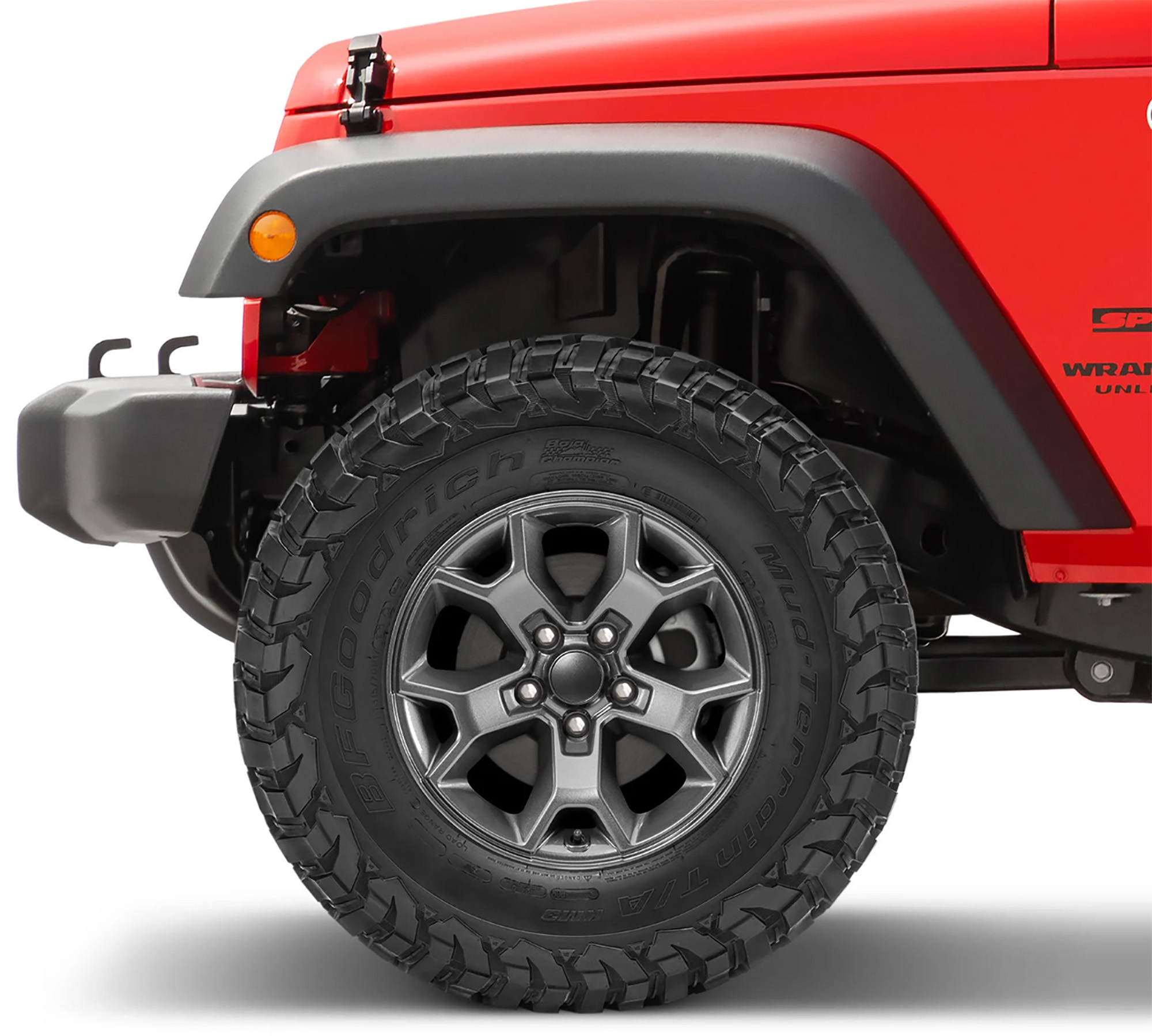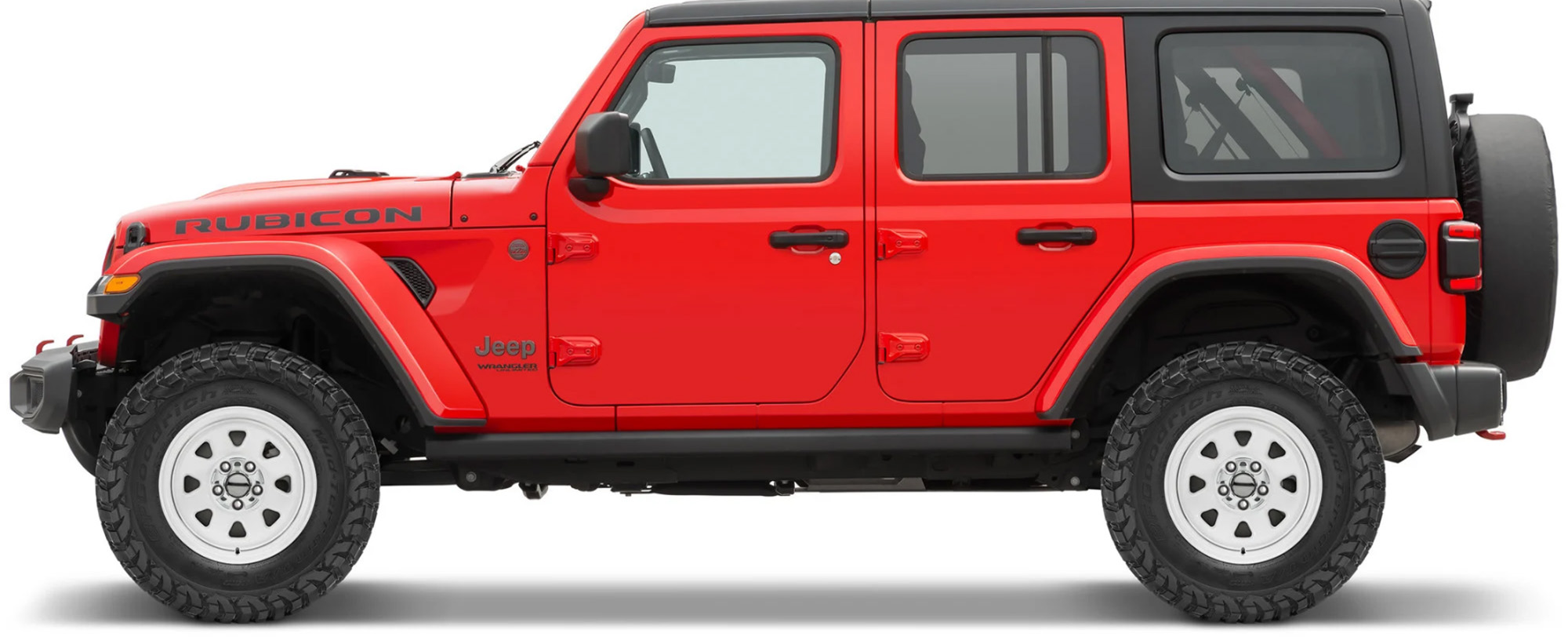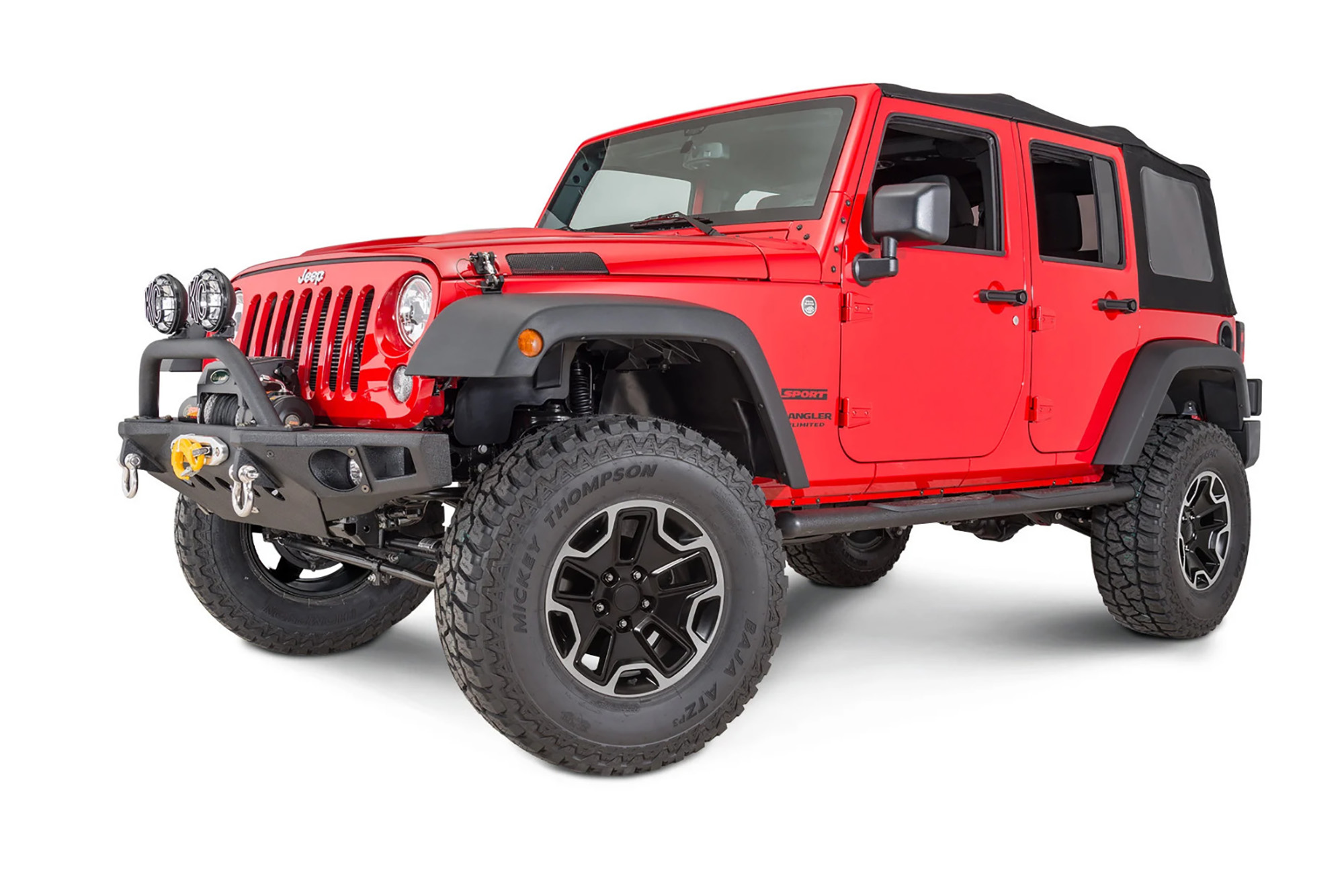by Matt Konkle
Torque Managing Editor
The beginning of a new year is an amazing time to evaluate all of your Jeep's needs. It also provides the perfect chance for many to work on their Jeeps and finally finish all those modification projects that lingered through the previous seasons.
And while that may not exactly be new information, one thing seems really popular so far in 2023.
Weight.
No, not yours — your Jeep.
Thanks to any projects involving new steel bumpers, winch additions, rack installs, larger tires and a host of other pound-adding mods, it is certainly fair to say your Jeep probably is running just a bit heavier these days.
Well, as you continue to modify the vehicle, one place you can look to keep from adding even more weight is your wheels. That’s because Jeep alloy wheels are often up to 8-10 pounds lighter than steel versions, while still providing durability as well as a host of different looks and finishes for customization.
Even those with newer Jeeps that already have factory alloy wheels can benefit, as aftermarket ones can replace damaged wheels, help you change the look of your Jeep with numerous different color options and designs, and can even offer better offset and backspacing to accommodate suspension lifts with larger tires.

Image: Quadratec Morphic Wheel
For everyday use, lighter alloy wheels can reduce that vehicle weight and help drivetrain components last longer, prevent breakage and can make your Jeep’s suspension react quicker — especially when off-roading.
Acceleration and braking performance increases as well when you keep that extra weight off because it takes a bit less energy to start and stop them from spinning.
While these advantages are pretty clear, deciding on which rim to choose can be somewhat trickier. Sure, you may find a style or look you like, but it may not fit your Jeep's model year. Or it could be too small for your tire.
So how do you know what to look for when choosing a new lightweight Jeep alloy wheel going into this year?
First, and most important, is picking out a rim you like that fits your vehicle. See, not all rims are created equal and some may not have the correct attachment pattern. And ones that have the correct amount of bolts, may not have the right spacing. For example, most Wrangler wheels either have a 5x4.5 or 5x5 bolt pattern depending on the vehicle year. This means they are five-lug wheels, where the lugs are spaced out evenly on a circle that is 4.5- or 5-inches in diameter. Jeep CJ spacing is normally 5x5.5, while XJ, ZJ and WJ all vary. The easiest way to figure out what pattern you may have is to cross reference your make and year with our vehicle bolt pattern guide.

Image: Quadratec Retro CJ Wheel
Once you determine a wheel will fit your Jeep, the next step is to ensure you are getting the correct size. Matching the rim you desire to a particular tire is as simple as matching the diameter of each and following the manufacturer's width recommendations. For example — a 15-inch tire like a 215/75R15 has to go on a 15-inch wheel. From there, each tire will have certain width guidelines that, in this case, would be 7-8 inches. That's not to say you couldn't shoehorn a tire on a different-sized rim such as a 10-inch, but you should use caution. For your safety, we definitely recommend following the respective tire manufacturer’s guidelines when choosing a wheel width. Also, for those with newer Jeeps — no matter the wheel you choose, you will still be able to use your Jeep's Tire Pressure Monitoring System.
Now, here is where things take a technical turn as every alloy wheel has both an offset and backspace measurement — besides the standard bolt pattern and width. Generally, these are very important numbers for those who plan to add a lift kit, body lift, or otherwise raise their vehicle, as the correct measurements will keep a tire from rubbing against the body. Or worse, from not fitting at all.
Regarding offset — this is the distance from the mounting pad to the centerline of the wheel and the lower the offset, the further outward it will mount. This is definitely a plus for those with lifted Jeeps.
Backspacing is a measurement from the mounting pad to the inner edge of the wheel and, similar to offset, less backspace indicates it protrudes less into the wheel well, therefore, reducing the risk of rubbing.
All alloy wheels will list these measurements somewhere in their description, and you can easily compare them to whatever your respective suspension (or body) lift recommends.

Imgae: Quadratec Hardrock Wheel
Finally, you may see the terms hub-centric or lug-centric mentioned on a particular wheel you desire. These are terms that can be confusing, so here are the basics of each.
Basically, hub-centric means that the space inside the wheel’s center bore is designed to fit perfectly on the axle. This way, the wheel is centered by the hub connection and the lugs can hold it flush against the mounting plate. In a hub-centric design, the connection will bear the weight of the Jeep. Most older Jeep stock wheels will be hub centric and many believe these provide the best ride quality.
Lug-centric indicates the wheel is centered by the lug nuts — instead of the hub. Most aftermarket alloy wheels fall into this category these days as manufacturers are engineering them with larger hub diameters to fit a wide range of vehicles. So, when installed, there usually is a small space between the axle and hub instead of flush contact.
As far as what is better, some report no difference in drive quality between hub- and lug-centric wheels, especially when using acorn-style lugs to center. But others say lug-centric rims cause a degraded driving experience and could even fail after time; depending on driving conditions. This is because driving, especially off-road driving, on lug-centric wheels can mean some impacts will apply a shear force to the lug studs, sometimes more than they are designed to handle. This can potentially cause the lug studs to bend, leading to vibration as the wheel slips around on the mounting plate — possibly damaging the wheel's center bore if it has enough play to contact the axle.
A good way to correct this, should you choose lug centric and have an issue, is to purchase hub centric wheel spacers. These spacers fit inside the wheel hub and then fit over the axle, making that lug-centric fitment into a hub-centric one.
Related Articles:
What Is The Difference Between Acorn And Spline Lug Nuts?





















